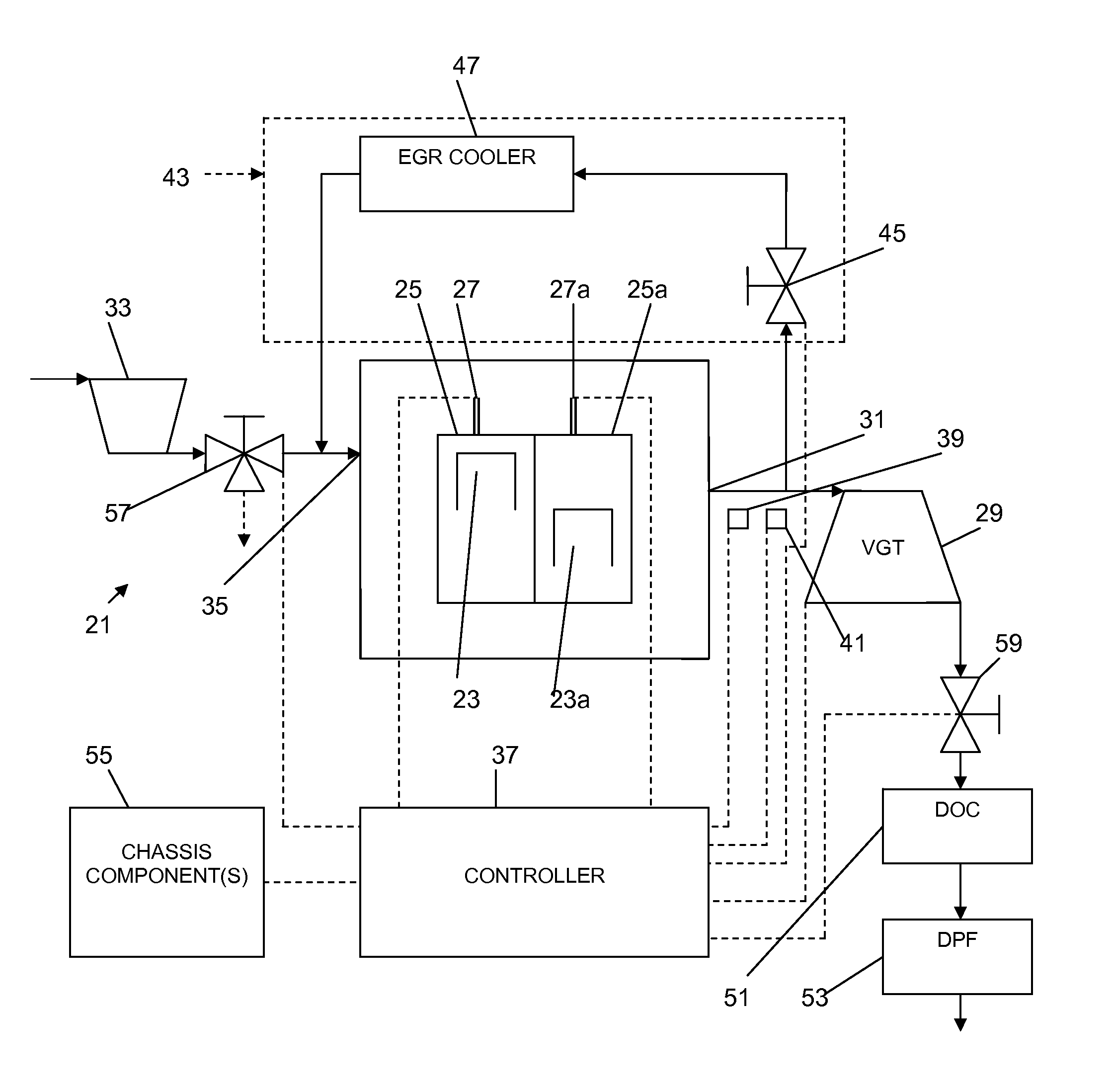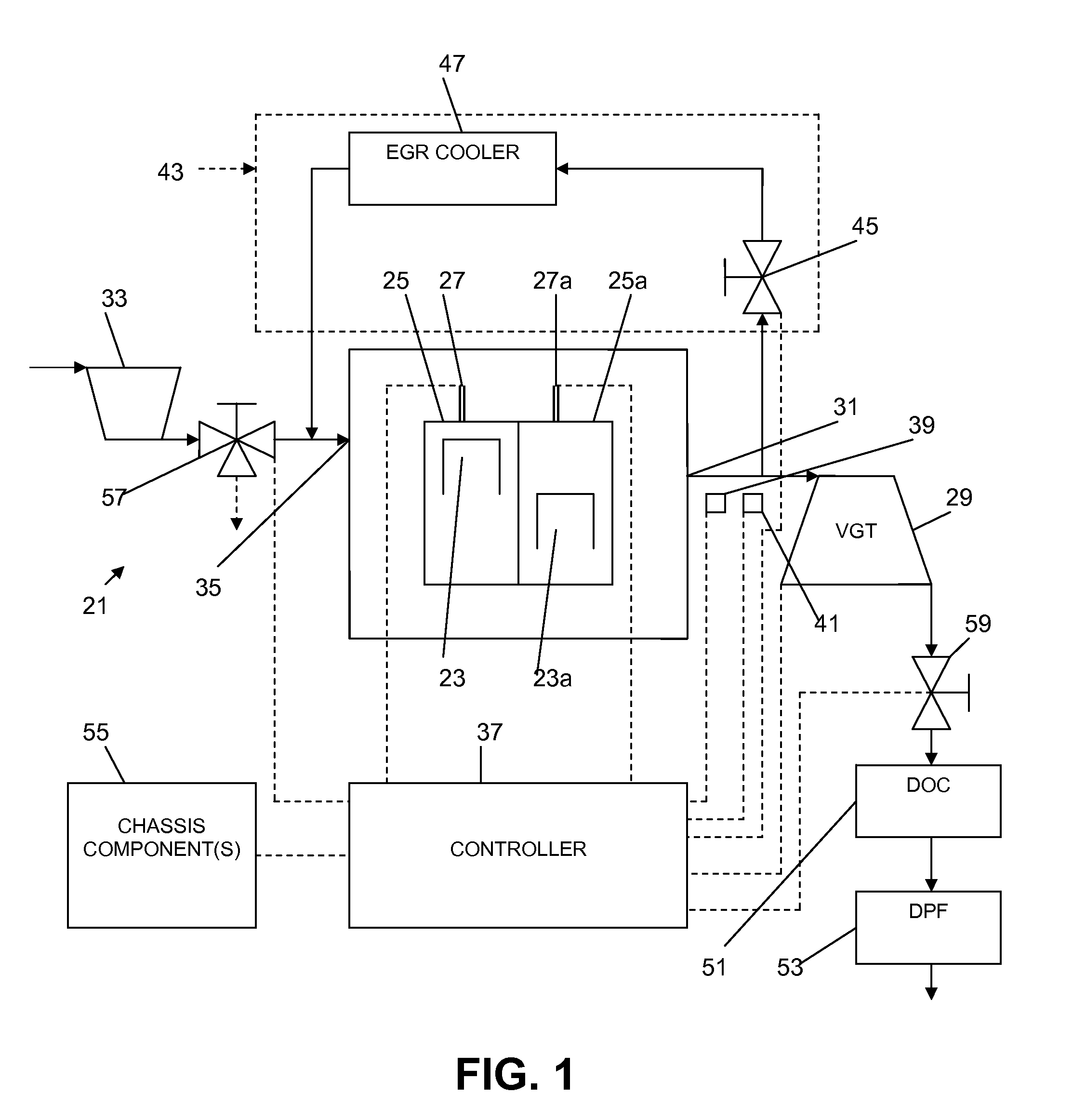Method for reducing diesel engine emissions, and diesel engine
- Summary
- Abstract
- Description
- Claims
- Application Information
AI Technical Summary
Benefits of technology
Problems solved by technology
Method used
Image
Examples
Embodiment Construction
[0011]A diesel engine 21 according to an aspect of the present invention is seen in FIG. 1 and comprises at least one piston 23 movable in a cylinder 25 between a top dead center (TDC) and a bottom dead center (BDC) position. A fuel injector 27 is provided for injecting fuel into the cylinder, ordinarily proximate TDC, and the combination of temperature and pressure causes the fuel to combust and force the piston toward the BDC position. The piston 23 is ordinarily linked to a crankshaft (not shown) that is turned as the piston reciprocates.
[0012]A variable geometry turbine (VGT) 29 is provided downstream of an exhaust 31 of the engine 21 through which exhaust from the cylinder 25 is adapted to flow. The VGT 29 is typically part of a turbocharger arrangement including a compressor 33 that is arranged upstream of the inlet 35 for boosting engine intake air pressure. The VGT 29 has conventional VGT vanes (not shown) for varying the size of an inlet opening of the VGT. The positions of...
PUM
 Login to View More
Login to View More Abstract
Description
Claims
Application Information
 Login to View More
Login to View More - R&D
- Intellectual Property
- Life Sciences
- Materials
- Tech Scout
- Unparalleled Data Quality
- Higher Quality Content
- 60% Fewer Hallucinations
Browse by: Latest US Patents, China's latest patents, Technical Efficacy Thesaurus, Application Domain, Technology Topic, Popular Technical Reports.
© 2025 PatSnap. All rights reserved.Legal|Privacy policy|Modern Slavery Act Transparency Statement|Sitemap|About US| Contact US: help@patsnap.com


